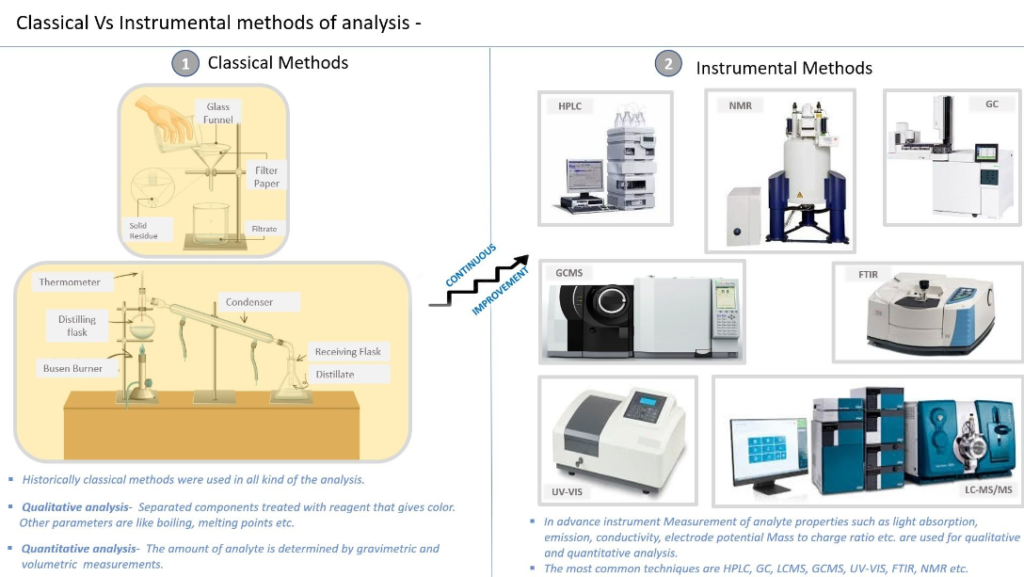Classical Vs Instrumental method of analysis
- sl10x.in
- June 23, 2024
- No Comments
- 10:40 am

Analytical Methods Overview
-
Classical Methods
These methods involve separating the analyte in a sample through techniques like precipitation, extraction, or distillation. For qualitative analyses, the separated components are treated with reagents that produce identifiable products, such as colors, boiling points, or melting points. Quantitative analysis typically involves determining the amounts of analyte through gravimetric or volumetric measurements. However, these methods are becoming less favored due to the demand for trace analysis with minimal sample quantities and their lack of specificity, which limits their reliability.
-
Instrumental Methods
In the twentieth century, scientists shifted their focus from classical methods to exploring alternative phenomena for solving analytical problems. Instrumental methods analyze physical properties like light absorption or emission, conductivity, electrode potential, and mass-to-charge ratio. These methods have become standard for both qualitative and quantitative analysis. Efficient chromatographic techniques have replaced distillation, extraction, and precipitation in separating components of complex mixtures, offering numerous advantages over classical methods.
sl10x.in
Category Post
Newsletter
Elit tellus, luctus nec ullamcorper mattis, pulvinar dapibus leo.
